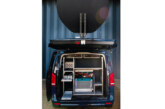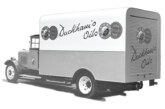
CVW spoke to David Wright, Company Secretary of the Verification of Lubricant Specifications (VLS), about the continued delay to the European lubricant specifications for heavy-duty vehicles.
The European Automobile Manufacturers Association (ACEA) sequences identify relevant performance standards for lubricants, specifically tailored to the European market, based on the engine type. When selecting the right oil to use in a customer engine, the ACEA sequences are an essential piece of information, providing reassurance that a particular engine lubricant meets the minimum quality levels for the vehicle and is suitable for use in that application.
ACEA reviews the sequences regularly to ensure they align with lubricant and OEM development. In April 2021, ACEA published new light-duty sequences, known as ACEA 2021. These replaced the previous sequences, dating back to 2016. According to ACEA, the new sequences were released to address engine developments being driven by a combination of regulatory and performance needs, complemented by necessary test maintenance requirements.
Many of the changes were due to modifications to engine tests as old models became obsolete and new models were released onto the market. The new sequences must use engines currently in production, so changes have to be made. The revised sequences also catered for the trend towards ultra-low viscosity fluids, typified by Asian manufacturers.
New claims can already be made against the 2021 oil sequences for light-duty applications, which will become mandatory for all new claims from 1st May 2022 onwards. ACEA usually releases new sequences for both light- and heavy-duty engines at the same time, but for the 2021 sequences, only the light-duty categories have been published so far.
Back in April 2021, ACEA said that “because the heavy-duty oil sequences are not at the same stage of readiness, at this time we have decided to split the light-duty and the heavy-duty sequences into two separate documents”.
ACEA said it expected to publish the 2021 ACEA heavy-duty oil sequences (replacing the updated 2016 version) no earlier than June 2021. 2022 has arrived, and the industry still waits.
What can we expect from the new heavy-duty sequences?
Like light-duty engines, heavy-duty engines have evolved to deliver increased efficiency and lower emissions. As a result, lubricants are working harder than ever and must be designed to provide adequate protection to engines operating at higher temperatures and under increased pressure.
As service intervals are extended, lubricants must deliver continued protection over even longer periods of time and/or mileage without suffering from degradation, build-up of soot, and other issues.

New categories E8 and E11 are likely to be introduced, replacing E6 and E9. These upgrades will focus on enhanced oxidation performance and piston cleanliness with the inclusion of established ASTM engine tests developed for API CK-4. Two new categories for fuel efficiency, F8 and F11, are also being developed, as the industry strives to help lower emissions through fuel efficiency gains.
According to Lubrizol, “to ensure heavy-duty diesel engine lubricants continue to meet the latest demands from the ACEA members, the revisions expected later in 2021 to the ACEA heavy-duty engine oil sequences will incorporate performance changes together with both new and replacement tests.
“The proposed ACEA 2021 sequences take into account key trends happening in the vehicle parc. The upgrade will introduce two new categories, ACEA E8 (replacing ACEA E6) and ACEA E11 (replacing ACEA E9), both containing important new tests including the Volvo T-13 oxidation test and Caterpillar Oil Aeration Test (COAT).
“ACEA 2021 also sees the introduction of the Daimler OM471 piston cleanliness test as a replacement for the OM501LA test in select categories; using engine hardware that is more representative of technology found in modern vehicles being manufactured today.”
Impact of biodiesel
The ACEA E8 and ACEA E11 categories are expected to see increased limits in the existing OM646BIO test. This test ensures the lubricant can perform effectively in the presence of biodiesel. According to government data, the use of UK-sourced biofuels, including biodiesel, is rising, up 5% in 2020 vs 2019. In 2020, the volume of UK-sourced biodiesel for UK road transport was 126 million litres.
Although it still represents only a small proportion of overall fuel use, biodiesel is another way of tackling emissions challenges. By testing products to perform in these conditions, operators can be reassured that the lubricant can still perform effectively in this application.
Will these be the last ACEA sequences?
Industry debate has begun about whether the latest release of sequences, whenever the heavy-duty ones are published, will be the last for an industry facing unprecedented change. Government policies across the world are moving to phase out the internal combustion engine, yet perhaps without the infrastructure ready to support alternatives.
Chevron Oronite’s Richard van den Bulk, Global OEM and Industry Liaison Manager, comments: “It is incredibly challenging for OEMs to meet carbon dioxide limits without investing in full EVs. And with future bans on ICE proposed in several countries around the globe, investment in new technology is challenging. Especially in the European market, OEMs are questioning themselves: ‘why would you invest in future engines when, in 10-15 years, you can’t sell them anymore?’”
Discussions continue between OEMs and the industry, but the ACEA sequences will undoubtedly need to adapt to a rapidly changing market, including developing specifications for electric- and hydrogenpowered vehicles to ensure these are adequately protected with quality fluids. Though OEM specifications may lead these innovations, there should be a level playing field for all lubricant manufacturers and blenders to compete on.
In the meantime, workshops must continue with servicing the day-to-day needs of their customers’ vehicles. Dealing with a range of petrol, diesel, hybrid, electric, and even hydrogen fuel or fuel cell engines, mechanics are advised to use online look-up tools to identify the correct oil for each vehicle.
These lubricant databases are powered by the technical knowledge and expertise of large companies, such as Olyslager based in the Netherlands or OATS based in the United Kingdom. They spend many thousands of hours each year working through owner manuals and service documents to identify the right products for a vehicle just by entering the registration. These databases sometimes offer a choice of brands so that workshops can make their own selection, depending on local availability or their personal preference. If in any doubt, contact the OEM for assistance.
The Verification of Lubricant Specifications (VLS) is an independent industry body that provides a credible and trusted means to verify lubricant specifications. This lubricant industry initiative aims to bring transparency to the lubricant marketplace and protect and educate end users.








